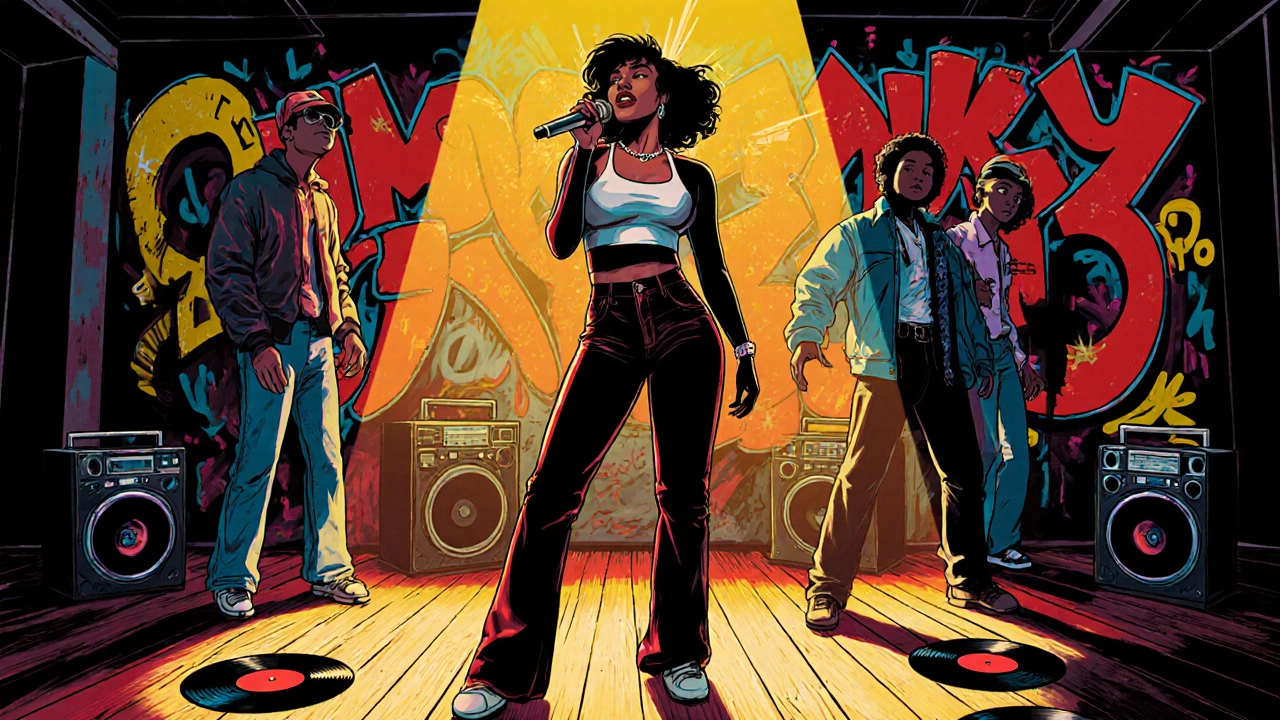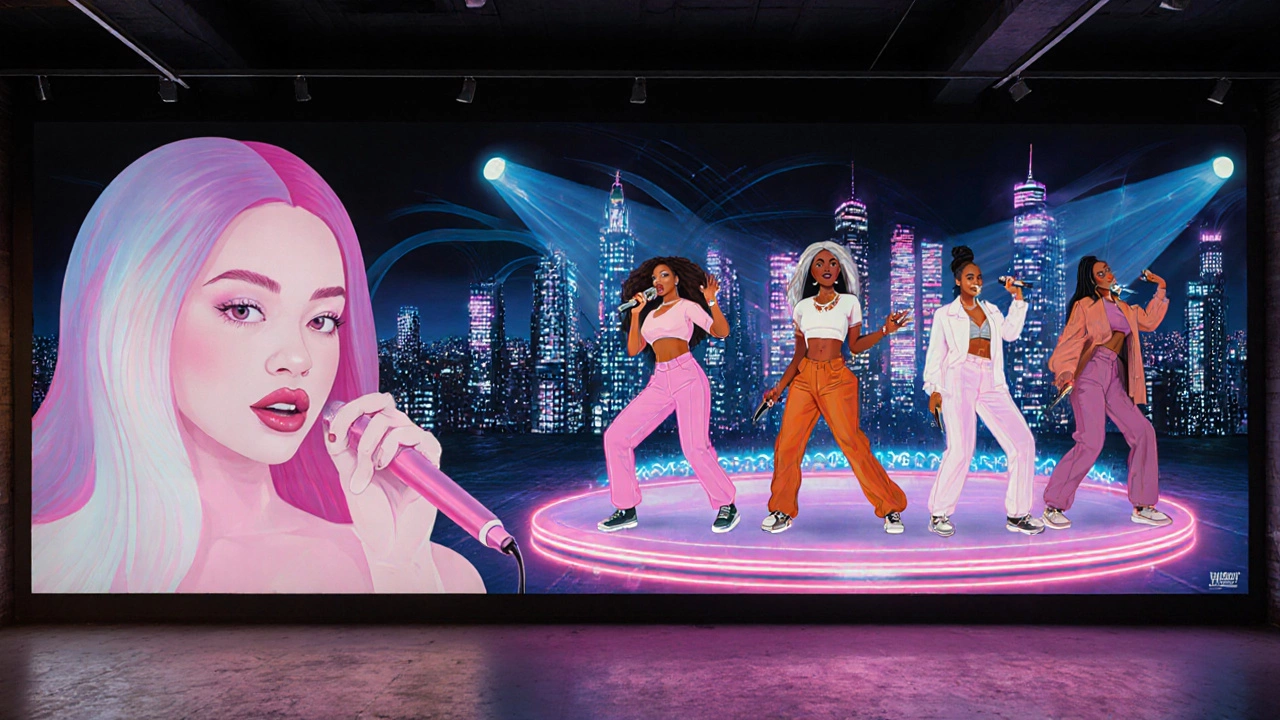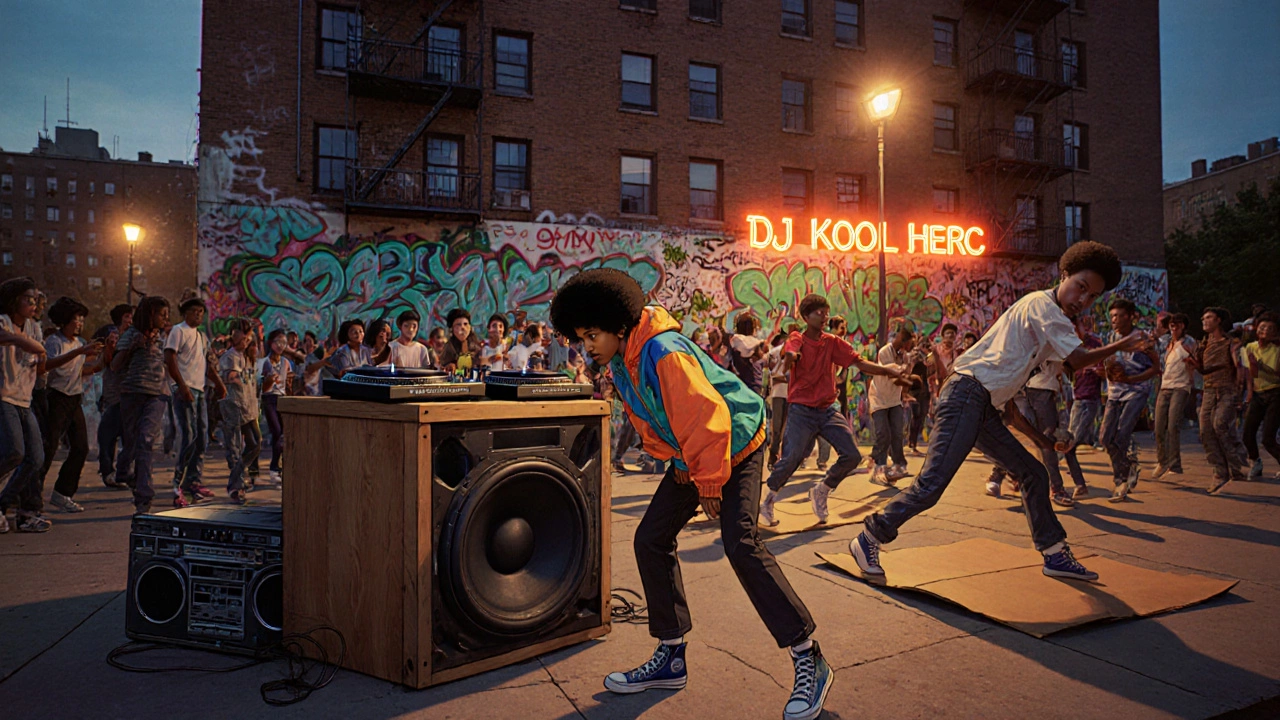Female Hip-Hop Pioneers Timeline
Historical Timeline
Sha-Rock
First recognized female MC in hip-hop history

Debut: "Rapper's Delight (Funky 4+1 Remix)"
Impact: Broke gender barriers in a male-dominated scene, earning respect as an MC
Roxanne Shante
Young prodigy who popularized diss-battle format

Debut: "Roxanne's Revenge"
Impact: Sparked the legendary "Roxanne Wars," inspiring teen rappers nationwide
MC Lyte
First solo female rapper to release a full album

Debut: "Lyte as a Rock"
Impact: Proved women could sustain successful solo careers in hip-hop
Queen Latifah
Advocate for respect and gender equality in hip-hop

Debut: "U.N.I.T.Y."
Impact: Brought empowerment anthems to mainstream hip-hop and crossed into acting
Salt-N-Pepa
First all-female rap trio to achieve multi-platinum success

Debut: "Push It"
Impact: Brought commercial success to an all-female rap group, hitting mainstream charts
Learn More
Pioneering Moments
- Sha-Rock's bold delivery included lines like "I'm the queen of the mic, I'll make you bow down."
- She performed at block parties, rap battles, and club dates, standing shoulder-to-shoulder with male peers.
- Her presence forced event organizers and fans to rethink gender dynamics in hip-hop.
- Later artists like Roxanne Shante, MC Lyte, Queen Latifah, and Salt-N-Pepa cited Sha-Rock as a key influence.
When people think of hip‑hop’s origins, the names that usually pop up are Grandmaster Flash, Afrika Bambaataa, or The Sugarhill Gang. What many don’t realize is that the very first voice from the genre’s breakout era belonged to a woman. The first female rapper who stepped onto the mic and earned respect in a male‑dominated scene was Sha‑Rock, born Sharon Green, a Bronx native who joined The Funky 4+1 in 1979.
Sha‑Rock: The Trailblazing MC
Sha‑Rock is widely credited as the first recognized female MC in hip‑hop history. She earned the nickname “The Mother of Rap” after her debut on The Funky 4+1’s single “Rapper’s Delight (The Funky 4+1 Remix)”. Her rapid‑fire delivery, confident presence, and lyrical prowess broke the gender barrier at a time when rap battles were almost exclusively a boys’ club.
Born in 1957 and raised in the Bronx, Sha‑Rock grew up amid the block parties that birthed hip‑hop culture. She learned to rhyme by listening to DJ Kool Herc’s mixes and mimicking the MCs who hyped the crowd. When The Funky 4+1 needed a fresh voice for their 1979 recording, Sha‑Rock stepped in, delivering verses that matched the group’s energy and added a new, gritty perspective.
The Early Hip‑Hop Landscape
To understand how Sha‑Rock made history, we need to see the scene she entered. Hip‑hop emerged in the early 1970s in the South Bronx, a neighborhood defined by its high‑rise housing projects, graffiti‑filled walls, and constant street parties. Hip Hop was more than music; it was a cultural movement that included breakdancing, DJing, graffiti, and MCing.
By the late 1970s, DJ crews like Grandmaster Flash and Afrika Bambaataa were experimenting with turntables, while MCs developed the skill of rhyming over beats. The era was dominated by male MCs such as Kool Moe Dee, Melle Mel, and the members of The Funky 4+1. In this environment, a female voice was a rarity, and audiences often doubted whether a woman could command a crowd with the same swagger as her male counterparts.
How Sha‑Rock Broke the Mold
Sha‑Rock’s breakthrough came on the single “Rapper’s Delight (The Funky 4+1 Remix)”, released in 1979 on Sugar Hill Records. The track reached the underground clubs across New York City and gave her national exposure. Her verses were unapologetically bold: she bragged about her lyrical skill, asserted her place in the crew, and even challenged male MCs with lines like “I’m the queen of the mic, I’ll make you bow down.”
Beyond the studio, Sha‑Rock performed at block parties, rap battles, and club dates, often standing shoulder‑to‑shoulder with her male peers. Her presence forced event organizers and fans to rethink the gender dynamics of the genre. She also inspired a wave of teenage girls who began to rhyme in schoolyard cyphers, later forming their own crews such as the android‑sister group The B‑Girls.

Women Who Followed Sha‑Rock’s Footsteps
The ripple effect of Sha‑Rock’s debut can be traced through the 1980s and 1990s. Each new female MC built on the foundation she laid, expanding lyrical themes and broadening the audience for women in rap.
- Roxanne Shante (1984) - Young prodigy known for “Roxanne’s Revenge”, a diss track that sparked the legendary “Roxanne Wars”.
- MC Lyte (1988) - First solo female rapper to release a full album, “Lyte as a Rock”, proving women could sustain solo careers.
- Queen Latifah (1991) - Brought empowerment anthems like “U.N.I.T.Y.” and later crossed into acting, solidifying the role of a cultural icon.
- Salt‑N‑Peṕa (1991) - Formed the first all‑female rap trio to achieve multi‑platinum success, hitting mainstream charts with “Push It”.
Each of these artists cited Sha‑Rock as an influence in interviews, underscoring her status as the catalyst for women’s entry into hip‑hop.
Comparing Early Female Rap Pioneers
| Artist | Debut Year | Signature Track | Major Impact |
|---|---|---|---|
| Sha‑Rock | 1979 | "Rapper's Delight (Funky 4+1 Remix)" | First recognized female MC; opened doors for women in rap battles. |
| Roxanne Shante | 1984 | "Roxanne's Revenge" | Popularized the diss‑battle format among teenage rappers. |
| MC Lyte | 1988 | "Paper Thin" | First solo female rapper with a full-length album. |
| Queen Latifah | 1991 | "U.N.I.T.Y." | Advocated for respect and gender equality in hip‑hop. |
| Salt‑N‑Peṕa | 1991 | "Push It" | Brought commercial success to an all‑female rap group. |
The table illustrates how each artist built on Sha‑Rock’s breakthrough, expanding lyrical breadth, commercial reach, and cultural influence. While Sha‑Rock’s legacy is rooted in the underground scene, later artists translated that momentum into mainstream acceptance.
Common Myths About Hip‑Hop’s First Woman
Myth #1: “The first female rapper was a member of Salt‑N‑Peṕa.” This conflates commercial breakout with chronological order. Salt‑N‑Pepá emerged a decade after Sha‑Rock’s debut.
Myth #2: “Women didn’t rap until the 1990s.” The evidence from The Funky 4+1 recordings, local newspaper clippings from 1979, and oral histories from Bronx block parties proves otherwise.Myth #3: “Sha‑Rock was a one‑hit wonder.” While she never released a solo album, her influence is documented through interviews with later icons and scholarly works on hip‑hop’s early era, such as Tricia Rose’s “Black Noise”.

Why Sha‑Rock Still Matters Today
In 2025, the hip‑hop landscape includes women topping charts, winning Grammys, and headlining festivals worldwide. Yet the conversation about gender parity still references the “first” barrier. Sha‑Rock’s story reminds us that breaking a gate keeps it open for future generations.
Educators use her example in music history classes to illustrate how cultural movements can be inclusive from the start. Community organizers in the Bronx reference her legacy when they host “Women in Hip‑Hop” workshops, encouraging local girls to pick up a mic.
Ultimately, recognizing Sha‑Rock isn’t just about honoring a name; it’s about acknowledging a turning point where hip‑hop became a platform where anyone with a rhyme could be heard.
Quick Checklist: How to Spot Early Female Rap Pioneers
- Look for recordings before 1990 that credit a female MC.
- Check the label; many early tracks were on Sugar Hill or Prelude.
- Read liner notes; women were often listed as “featured vocalist” rather than “MC” in early press.
- Search for newspaper archives from the Bronx and Harlem between 1978‑1985.
- Watch documentaries like “Hip‑Hop Evolution” - episode on women’s rise - for interview snippets.
Frequently Asked Questions
Who is officially recognized as the first female rapper?
Most historians credit Sha‑Rock of The Funky 4+1, whose 1979 remix of “Rapper’s Delight” marked the first recorded female MC verse.
Did Sha‑Rock release any solo albums?
No full solo album exists, but her verses appear on several early Hip‑Hop compilations and she remained active in live performances throughout the 1980s.
How did Sha‑Rock influence later female rappers?
She proved a woman could command a mic in a battle setting, inspiring artists like Roxanne Shante, MC Lyte, Queen Latifah and Salt‑N‑Pepá, who all cite her as a role model.
Are there any recordings of Sha‑Rock’s solo work?
A few demo tapes from the early ’80s circulate among collectors, but none were officially released by a label.
Where can I hear Sha‑Rock’s original tracks?
The 1979 Funky 4+1 remix can be found on classic hip‑hop compilation albums, streaming services, and the Sugar Hill Records archives.
Now that you know who the first female rapper really was, you can appreciate how a single verse in 1979 set off a cascade of talent that still shapes today’s charts. Next time you hear a woman spitting fire on stage, remember Sha‑Rock’s pioneering mic‑grab.

